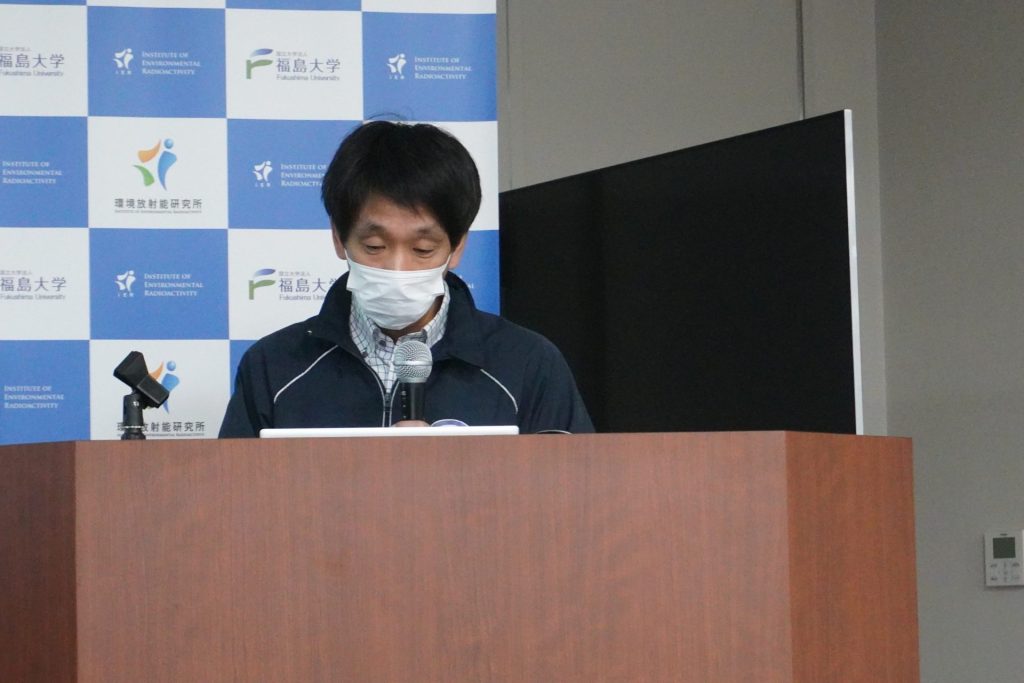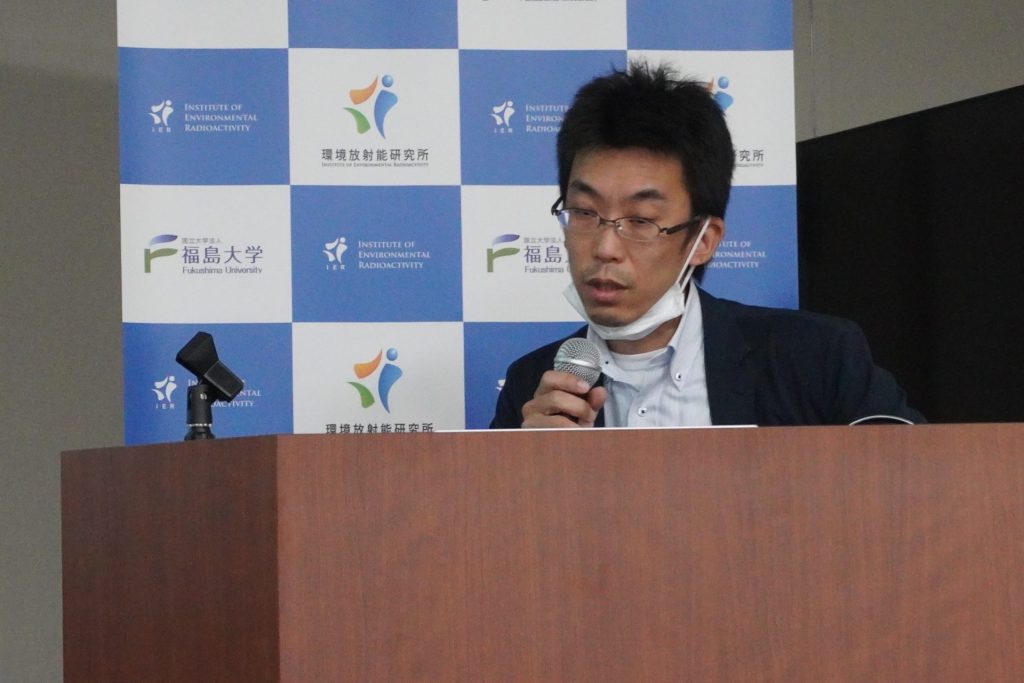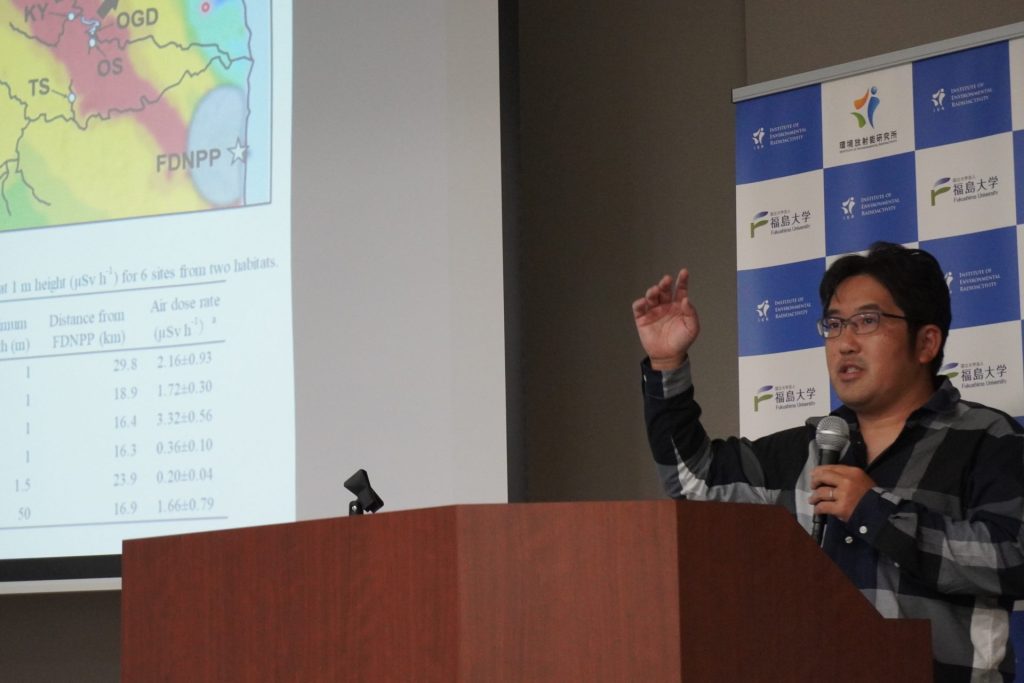October 30, 2023 5th IER seminar of FY2023 was held. <Associate Professor Wakiyama, Associate Professor Hirao, Associate Professor Wada>
| Date & Time | Mon. October 30, 2023, 13:30-15:00 JST |
| Venue | 6F Conference room, Main Bldg. IER/Online (Zoom) |
| Speakers | Associate Professor, WAKIYAMA Yoshifumi Associate Professor, HIRAO Shigekazu Associate Professor, WADA Toshihiro (Presentation order) |
| Lecture Titles | ・Riverine 129I dynamics during high-flow events on the Abukuma river (Wakiyama) ・Fluctuations of tritium in the environment in the vicinity of the FDNPP (Hirao) ・Distinct food-web transfers of 137Cs to fish in a dam reservoir and forest rivers in the Fukushima evacuation zone inferred from stomach contents and stable isotope analyses (Wada) |
Institute of Environmental Radioactivity (IER) regularly holds the IER seminar in which the faculty members report on their research results, with the aim of facilitating their research activities by exchanging research results within the researchers in different research fields.
In the 5th IER seminar of this fiscal year that was held on October 30, 2023, three presentations were given by Associate Professor WAKIYAMA Yoshifumi, Associate Professor HIRAO Shigekazu, and Associate Professor WADA Toshihiro to 24 participating researchers and students.
Associate Professor Wakiyama gave a presentation titled, “Riverine 129I dynamics during high-flow events on the Abukuma river”. Iodine-129 is one of the nuclides released due to the Fukushima nuclear accident, but there have been few studies on its dynamics in rivers. In his presentation, he explained temporal variations in particulate and dissolved Iodine-129 concentrations and their fluxes during high-flow events at the midstream of the Abukuma river based on the findings of collaborative research.
Associate Professor Hirao gave a presentation titled, “Fluctuations of tritium in the environment in the vicinity of the FDNPP”. He shared the results of measuring concentrations of tritium in atmospheric water vapor, tritium in tissue free water in plants, and organically bound tritium to clarify the characteristics of their spatial distribution and temporal variation over the land.
Associate Professor Wada gave a presentation titled, “Distinct food-web transfers of 137Cs to fish in a dam reservoir and forest rivers in the Fukushima evacuation zone inferred from stomach contents and stable isotope analyses”. Based on the results of stomach content analysis and stable isotope ratio analysis of masu salmon in summer, he explained that terrestrial insects supplied by the forest ecosystem in the upstream area and bioaccumulation through the food chain in the waterbody in the dam affect the radiocesium concentration in fish.
After each presentation, various questions and comments were raised by IER faculty members and French researchers who are currently visiting IER.



